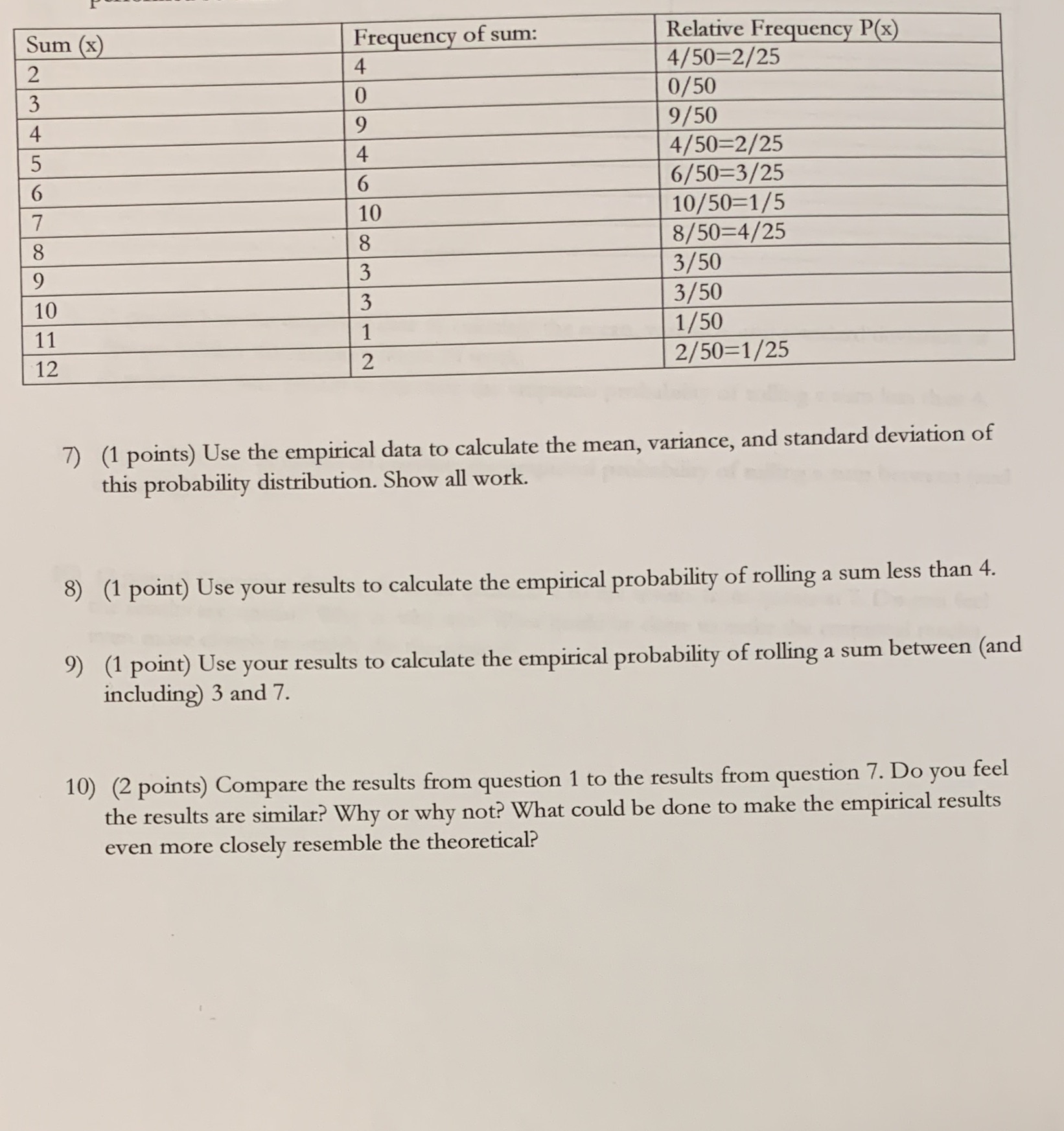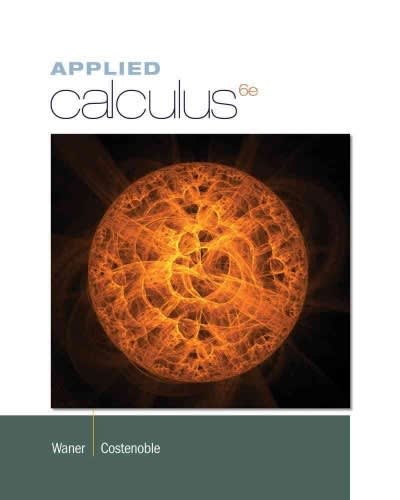Answered step by step
Verified Expert Solution
Question
1 Approved Answer
Sum (x) Frequency of sum: Relative Frequency P(x) 2 4 4/50=2/25 3 0 0/50 4 9 9/50 5 4 4/50=2/25 6 6 6/50=3/25 7 10

Step by Step Solution
There are 3 Steps involved in it
Step: 1

Get Instant Access to Expert-Tailored Solutions
See step-by-step solutions with expert insights and AI powered tools for academic success
Step: 2

Step: 3

Ace Your Homework with AI
Get the answers you need in no time with our AI-driven, step-by-step assistance
Get Started


